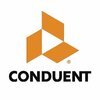Filter interviews by
Greet Technologies Interview Questions and Answers
24 Interview questions
Debits and credits are fundamental accounting concepts used to record financial transactions in double-entry bookkeeping.
Debits increase asset or expense accounts and decrease liability or equity accounts.
Credits increase liability or equity accounts and decrease asset or expense accounts.
Example: Purchasing equipment for cash is a debit to equipment and a credit to cash.
Example: Receiving cash from a customer is ...
Tangible assets are physical items owned by a business that have value and can be touched or measured.
Includes items like machinery, buildings, and vehicles.
Depreciates over time, reflecting wear and tear.
Can be used as collateral for loans.
Examples: a company car, office furniture, and manufacturing equipment.
Digital accounting enhances efficiency, accuracy, and accessibility in financial management, streamlining processes for businesses.
Increased Efficiency: Digital accounting automates repetitive tasks, reducing time spent on manual entries. For example, software can automatically import bank transactions.
Improved Accuracy: Digital systems minimize human errors in calculations and data entry. For instance, automated ...
Data migration in Tally involves transferring financial data from one system or version to another, ensuring data integrity and continuity.
Data migration is essential when upgrading Tally versions.
It can involve moving data from Tally to other accounting software.
Example: Migrating from Tally 7.2 to Tally ERP 9 requires careful data handling.
Data migration ensures that historical financial records are preserved.
Creating a data backup in Tally involves several steps to ensure data safety and integrity.
1. Open Tally and select the company for which you want to back up data.
2. Navigate to the 'Gateway of Tally' and select 'Alt + F3' (Company) to access company features.
3. Choose 'Backup' from the list of options.
4. Specify the path where you want to save the backup file. For example, 'D:\TallyBackups'.
5. Confirm the backup ...
Data synchronization ensures consistent data across multiple systems, crucial for accurate financial reporting in Tally ERP 9.
Data synchronization in Tally ERP 9 allows multiple users to access and update financial data in real-time.
It helps maintain consistency between different branches of a business by syncing data like sales, purchases, and inventory.
For example, if a sale is made at one branch, it can be sync...
Depreciation is a non-cash expense reflecting the reduction in value of tangible assets over time.
Depreciation is classified as an operating expense on the income statement.
It represents the allocation of an asset's cost over its useful life.
For example, a company buys machinery for $100,000 with a 10-year life; it depreciates $10,000 annually.
Depreciation affects net income but does not involve actual cash outflo...
Credit note is issued by seller to buyer for refund or adjustment, while debit note is issued by buyer to seller for additional payment or adjustment.
Credit note is issued by seller to buyer when there is an overpayment or refund due to the buyer.
Debit note is issued by buyer to seller when there is an underpayment or additional payment due to the seller.
Credit note reduces the amount payable by the buyer to the s...
Intangible assets are non-physical assets that have value, such as patents, trademarks, copyrights, and goodwill.
Intangible assets lack physical substance
They are long-term assets with no physical form
Examples include patents, trademarks, copyrights, and goodwill
Intangible assets are typically listed on a company's balance sheet
Types of GST include CGST, SGST, IGST, and UTGST.
CGST - Central Goods and Services Tax
SGST - State Goods and Services Tax
IGST - Integrated Goods and Services Tax
UTGST - Union Territory Goods and Services Tax
Greet Technologies Interview Experiences
33 interviews found
Accounting and Administration Executive Interview Questions & Answers
posted on 5 Mar 2025
(2 Questions)
- Q1. Tally software regarding questions
- Q2. Data & technical regarding
Interview Preparation Tips
I appeared for an interview in May 2025, where I was asked the following questions.
- Q1. What is golden rules of accounting
- Ans.
The golden rules of accounting are fundamental principles guiding the recording of financial transactions.
1. Debit what comes in, credit what goes out. (e.g., when cash is received, debit cash account)
2. Debit the receiver, credit the giver. (e.g., when goods are sold on credit, debit the customer account)
3. Debit all expenses and losses, credit all incomes and gains. (e.g., when an expense is incurred, debit the expen...
- Q2. What is mean debit and credit
- Ans.
Debits and credits are fundamental accounting concepts used to record financial transactions in double-entry bookkeeping.
Debits increase asset or expense accounts and decrease liability or equity accounts.
Credits increase liability or equity accounts and decrease asset or expense accounts.
Example: Purchasing equipment for cash is a debit to equipment and a credit to cash.
Example: Receiving cash from a customer is a deb...
- Q3. What is depreciation
- Ans.
Depreciation is the systematic reduction of an asset's recorded value over time due to wear and tear or obsolescence.
Depreciation allocates the cost of tangible assets over their useful lives.
Common methods include straight-line, declining balance, and units of production.
For example, if a machine costs $10,000 and has a useful life of 10 years, it may depreciate $1,000 annually using the straight-line method.
Depreciat...
- Q4. What are tangible assets
- Ans.
Tangible assets are physical items owned by a business that have value and can be touched or measured.
Includes items like machinery, buildings, and vehicles.
Depreciates over time, reflecting wear and tear.
Can be used as collateral for loans.
Examples: a company car, office furniture, and manufacturing equipment.
- Q5. What is mean by accounting
- Ans.
Accounting is the systematic process of recording, analyzing, and reporting financial transactions to provide insights into an entity's financial health.
Involves recording financial transactions, such as sales and expenses.
Analyzes financial data to assess performance, e.g., profit margins.
Reports financial information through statements like balance sheets and income statements.
Ensures compliance with regulations and ...
Interview Preparation Tips
I applied via Approached by Company and was interviewed in May 2024. There were 3 interview rounds.
(7 Questions)
- Q1. Tell me about yourself
- Ans.
Detail-oriented Accounts Process Executive with a strong background in finance and a passion for optimizing accounting processes.
I have a Bachelor's degree in Accounting, which provided me with a solid foundation in financial principles.
In my previous role at XYZ Corp, I managed accounts payable and receivable, ensuring timely processing and accuracy.
I am proficient in accounting software like QuickBooks and SAP, which...
- Q2. Do you know the job role?
- Ans.
An Accounts Process Executive manages financial transactions, ensures accuracy, and supports accounting operations.
Handles accounts payable and receivable, ensuring timely payments and collections.
Prepares financial reports and reconciliations to maintain accurate records.
Assists in budgeting and forecasting by analyzing financial data.
Collaborates with other departments to resolve discrepancies and improve processes.
U...
- Q3. What were the golden rules of accounting
- Ans.
The golden rules of accounting are basic principles that guide the process of recording financial transactions.
The three golden rules of accounting are: Debit the receiver, Credit the giver; Debit what comes in, Credit what goes out; Debit all expenses and losses, Credit all incomes and gains.
These rules help ensure that financial transactions are accurately recorded and classified in the accounting system.
For example,...
- Q4. What is depreciation
- Ans.
Depreciation is the allocation of the cost of a tangible asset over its useful life.
Depreciation is a non-cash expense that reduces the value of an asset over time.
It reflects the wear and tear, obsolescence, or decrease in value of the asset.
Common methods of calculating depreciation include straight-line, double declining balance, and units of production.
Example: A company buys a delivery truck for $50,000 with a use...
- Q5. What do you know about GST
- Ans.
GST stands for Goods and Services Tax, a value-added tax levied on most goods and services sold for domestic consumption.
GST is a single tax on the supply of goods and services, right from the manufacturer to the consumer.
It has replaced multiple indirect taxes like VAT, service tax, etc.
GST has 4 tax slabs - 5%, 12%, 18%, and 28%.
Input tax credit can be claimed on taxes paid on input goods and services.
GST registratio...
- Q6. What are the types of GST
- Ans.
Types of GST include CGST, SGST, IGST, and UTGST.
CGST - Central Goods and Services Tax
SGST - State Goods and Services Tax
IGST - Integrated Goods and Services Tax
UTGST - Union Territory Goods and Services Tax
- Q7. Tell me about any topic in hindi
(5 Questions)
- Q1. Tell me about yourself
- Q2. Where do you live in Bangalore
- Ans.
I live in the vibrant neighborhood of Koramangala, known for its cafes, startups, and lively atmosphere.
Koramangala is a hub for young professionals and students.
The area has numerous parks, like the 5th Block Park, perfect for relaxation.
It's famous for its diverse dining options, from street food to upscale restaurants.
Koramangala is well-connected to other parts of Bangalore, making commuting easy.
- Q3. Do you know about Tally,GST and TDS
- Ans.
Yes, I am familiar with Tally for accounting, GST for taxation, and TDS for tax deduction.
I have experience using Tally software for maintaining accounting records.
I understand the concepts of GST (Goods and Services Tax) and its implications on business transactions.
I am aware of TDS (Tax Deducted at Source) and its requirements for tax deduction.
I have practical knowledge of how to handle GST and TDS compliance in ac...
- Q4. Do you know that the job role is a voice process one?
- Ans.
Yes, I understand that the Accounts Process Executive role involves handling voice communications with clients and stakeholders.
Voice processes require clear communication skills to explain financial concepts.
For example, I may need to discuss account discrepancies with clients over the phone.
Active listening is crucial to understand client concerns and provide accurate solutions.
I am comfortable using voice tools and ...
- Q5. Do you know the salary package here?
- Ans.
I am not aware of the specific salary package for the Accounts Process Executive position here.
Salary packages can vary based on experience and qualifications.
It's common for companies to discuss salary during the final interview stages.
Researching industry standards can provide a general idea of expected salaries.
(2 Questions)
- Q1. Tell me about any topic in hindi
- Q2. Do you know that hindi is mandatory in this company?
- Ans.
Yes, I understand that Hindi is a mandatory language in this company, and I am prepared to communicate effectively in it.
Hindi is essential for internal communication among team members.
Client interactions may require proficiency in Hindi to ensure clarity.
Understanding company policies and documentation in Hindi is crucial.
I have experience communicating in Hindi in previous roles, enhancing collaboration.
Interview Preparation Tips
Skills evaluated in this interview
I appeared for an interview in Apr 2025, where I was asked the following questions.
- Q1. Tell me about ur family in hindi
- Ans.
मेरे परिवार में मेरे माता-पिता, एक भाई और एक बहन हैं, जो सभी एक-दूसरे के साथ बहुत करीबी हैं।
माता-पिता: मेरे पिता एक इंजीनियर हैं और मेरी माँ एक शिक्षिका हैं। वे हमेशा मुझे शिक्षा के महत्व के बारे में प्रेरित करते हैं।
भाई: मेरा एक बड़ा भाई है, जो एक डॉक्टर है। वह हमेशा मेरी मदद करता है और मुझे अपने करियर के बारे में सलाह देता है।
बहन: मेरी छोटी बहन अभी स्कूल में है और वह बहुत प्रतिभाशाली है। वह कला में रुचि रखती है और अक...
- Q2. Tell me about ur self and family
- Ans.
I am a dedicated Executive Accountant with a strong background in finance and a supportive family that values education and growth.
Professional Background: I have over 10 years of experience in accounting, specializing in financial reporting and analysis.
Education: I hold a Master's degree in Accounting, which has equipped me with the skills to navigate complex financial regulations.
Family Values: My family emphasizes ...
(2 Questions)
- Q1. What is meant by intangible assets ?
- Ans.
Intangible assets are non-physical assets that have value, such as patents, trademarks, copyrights, and goodwill.
Intangible assets lack physical substance
They are long-term assets with no physical form
Examples include patents, trademarks, copyrights, and goodwill
Intangible assets are typically listed on a company's balance sheet
- Q2. What is Credit and Debit note ?
- Ans.
Credit note is issued by seller to buyer for refund or adjustment, while debit note is issued by buyer to seller for additional payment or adjustment.
Credit note is issued by seller to buyer when there is an overpayment or refund due to the buyer.
Debit note is issued by buyer to seller when there is an underpayment or additional payment due to the seller.
Credit note reduces the amount payable by the buyer to the seller...
I applied via Walk-in and was interviewed in Oct 2024. There was 1 interview round.
(2 Questions)
- Q1. Normal accounts question journal entry,
- Q2. Accounting standard
Interview Preparation Tips
(2 Questions)
- Q1. What is Depreciation?
- Ans.
Depreciation is the systematic reduction in the recorded cost of a fixed asset over its useful life.
Depreciation allocates the cost of an asset over its useful life, reflecting wear and tear.
Common methods include straight-line, declining balance, and units of production.
For example, a $10,000 machine with a 5-year life may depreciate $2,000 annually using straight-line.
Depreciation impacts financial statements, reduci...
- Q2. Depreciation is which type of Expenses
- Ans.
Depreciation is a non-cash expense reflecting the reduction in value of tangible assets over time.
Depreciation is classified as an operating expense on the income statement.
It represents the allocation of an asset's cost over its useful life.
For example, a company buys machinery for $100,000 with a 10-year life; it depreciates $10,000 annually.
Depreciation affects net income but does not involve actual cash outflow.
Interview Preparation Tips
I applied via Job Portal and was interviewed in Nov 2024. There was 1 interview round.
(2 Questions)
- Q1. Introduction in hindi and english
- Q2. Basic accounting
Interview Preparation Tips
I applied via Naukri.com and was interviewed in Jan 2024. There were 4 interview rounds.
(2 Questions)
- Q1. Basic of accounts
- Q2. Depreciation method
(2 Questions)
- Q1. Tally introduction
- Q2. Golden rules of accounts
Writing SA about topic which they give
(2 Questions)
- Q1. Accounting rules
- Q2. Trial balance and balance sheet
Interview Preparation Tips
I applied via Company Website
(3 Questions)
- Q1. What do you mean by Accounting
- Ans.
Accounting is the process of recording, summarizing, and analyzing financial transactions of a business.
Accounting involves the systematic recording of financial transactions.
It includes summarizing and organizing financial data into financial statements.
Accounting also involves analyzing financial information to provide insights and make informed decisions.
Examples of accounting tasks include bookkeeping, preparing fi...
- Q2. What is Real Account of Golden Rule
- Ans.
Real Account of Golden Rule is a principle in accounting that states all assets have a debit balance and all liabilities have a credit balance.
Real Account of Golden Rule is based on the principle of double-entry bookkeeping.
Under this rule, all assets are recorded on the debit side of the balance sheet.
Liabilities, on the other hand, are recorded on the credit side of the balance sheet.
This rule helps maintain the fun...
- Q3. What is contra Entry
- Ans.
A contra entry is a bookkeeping entry that offsets the effect of a previous entry in order to correct errors or adjust balances.
Contra entries are used to reverse or cancel out a previous entry in the accounting records.
They are typically used to correct errors, adjust balances, or record transactions that involve internal transfers.
Contra entries are recorded in the opposite account to the original entry, effectively ...
Top trending discussions






Greet Technologies Interview FAQs
The duration of Greet Technologies interview process can vary, but typically it takes about less than 2 weeks to complete.
Tell us how to improve this page.
Greet Technologies Interviews By Designations
- Greet Technologies Accounts Process Executive Interview Questions
- Greet Technologies Executive Accountant Interview Questions
- Greet Technologies Key Accounts Executive Interview Questions
- Greet Technologies Financial Accountant Interview Questions
- Greet Technologies Accountant Interview Questions
- Greet Technologies Software Engineer Interview Questions
- Greet Technologies Technical Support Executive Interview Questions
- Greet Technologies Processing Executive Interview Questions
- Show more
Interview Questions for Popular Designations
Overall Interview Experience Rating
based on 30 interview experiences
Difficulty level
Duration
Interview Questions from Similar Companies
Greet Technologies Reviews and Ratings
based on 372 reviews
Rating in categories
|
Executive Accountant
321
salaries
| ₹1.5 L/yr - ₹3.6 L/yr |
|
Accounts Process Executive
319
salaries
| ₹1.4 L/yr - ₹3.6 L/yr |
|
Senior Accounts Executive
87
salaries
| ₹2.4 L/yr - ₹3.8 L/yr |
|
Senior Accounts Process Executive
30
salaries
| ₹2 L/yr - ₹3.4 L/yr |
|
Account Process Associate
20
salaries
| ₹1.8 L/yr - ₹3 L/yr |

Teleperformance

iEnergizer

WNS

Conneqt Business Solutions
- Home >
- Interviews >
- Greet Technologies Interview Questions













